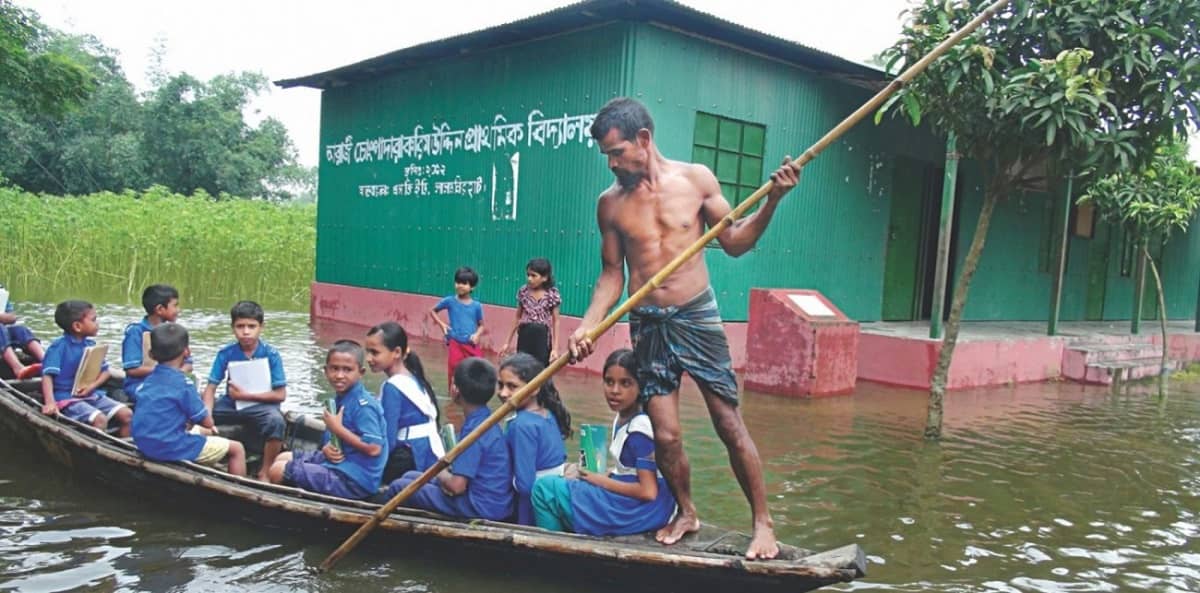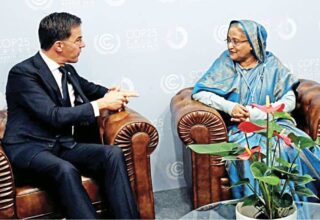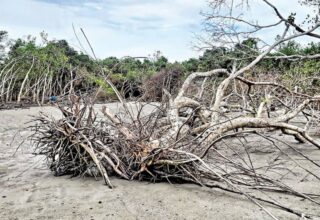
As Bangladesh is inundated by severe floods not long after being hit by super cyclone Amphan, we are seeing the adverse impacts of human induced climate change in reality. It is therefore time to deal with this loss and damage from climate change more seriously, both at home as well as internationally.
At the international level, over the years, the vulnerable developing countries have been arguing that the international community must deal with the inevitable loss and damage that will be caused due to human induced climate change under the United Nations Framework Convention on Climate Change (UNFCCC).
While there have been some success over these years, such as the setting up of the Warsaw International Mechanism (WIM) on loss and damage at the 19th Conference of Parties (COP19) in Warsaw, Poland in 2013, and then the setting up of the Santiago Network on Loss and Damage at COP25 in Madrid, Spain last year, we have not been able to establish any financing mechanism beyond insurance.
One big stumbling block in order to achieve this has been the difficulty of attributing climate events such as cyclones and floods to human induced climate change, as these are naturally occurring events.
However, over the last year, the scientists who study this aspect of attributing human induced climate change to climatic events have made a significant breakthrough in their ability to establish, with credibility and speed, the level of intensification of each event due to the existing level of human induced climate change that has already occurred until now.
For example, as Cyclone Amphan was gathering energy in the Bay of Bengal, it became a super cyclone due to the abnormally elevated sea surface temperatures of the Bay, which was quickly attributed to the fact that human induced climate change has already elevated global mean atmospheric temperature by over one degree Centigrade. Similarly, the hurricane Hanna that has just hit the coast of Texas in the United States is also being attributed to human induced climate change.
Similar attributions are being made for wildfires that have occurred in Australia last year and in California this year, as well as floods around the world, including the ones we are suffering from in Bangladesh and India right now, as well as in China. The magnitude of floods are measured in their return periods. What used to be a “one in 20 years” flood in Bangladesh—as in, floods of such magnitude used to occur around every 20 years for the many hundreds of years for which we have records—has occurred five times over the last 20 years. Hence, what used to be a one in 20 years magnitude flood in the past is now likely to become a one in five or even four years flood in future.
What this means is that the question of attributing adverse impacts due to human induced climate change is no longer in doubt; it can be done with scientific credibility from now on. It is important to point out, however, that human induced climate change does not cause these events, as they are still naturally occurring events, but they enhance their severity or intensity (which is what makes them more destructive) due to the elevated temperature of the atmosphere.
So it is now apparent that the year 2020 is clearly the year in which the impact of climate change can be identified in both Cyclone Amphan that hit Bangladesh and India a few months ago, as well as the current flooding which is affecting millions of people as well as crops and property.
Although Bangladesh has improved its disaster preparedness for both cyclones and floods, and loss of human lives has been minimised, the loss to crops and infrastructure is still very severe and people’s livelihoods are still badly affected.
Hence, the time has come for Bangladesh to develop our own National Mechanism on Loss and Damage due to Climate Change which the Ministry of Disaster Management has developed a pilot project for. This project will be a public private partnership action research project to identify the different kinds of climate events, such as floods, cyclones, droughts and salinity intrusion in coastal areas, as well as to develop a mechanism for identifying necessary actions to build back better after the events in order to be better prepared for future events and impacts. At the same time, non-economic loss and damage, such as mental health impacts on people as well as the adverse impacts on education, need to be identified and managed.
However, it is not enough for us to take actions at home alone if the global temperature keeps going up. The government of Bangladesh needs to step up its international efforts to persuade all countries to enhance their ambitions to reduce their greenhouse gas emissions as they agreed in the Paris Agreement on Climate Change at COP21 in 2015. We need to push all countries to fulfil their pledges to keep the global temperature below 1.5 degrees Centigrade.
At the same time, we need to push for a financing mechanism to support developing countries that are suffering from the adverse impacts of human induced climate change. So far, the developed countries have been willing to discuss insurance and set up pilot insurance schemes around the world, including in Bangladesh. However, it is already very evident that while insurance has a role to play, it cannot be applied everywhere and it is especially not useful for poor people who cannot pay the premium.
So the demand from vulnerable developing countries going into COP26, which will be held in Glasgow, Scotland and will be hosted by the UK government in November 2021, must be to agree on a financial mechanism to deal with loss and damage from human induced climate change. As Bangladesh is now the leader of the Climate Vulnerable Forum (CVF), which is made up of nearly 50 of the most vulnerable countries, we are in a good position to lead the CVF countries to push for finance for loss and damage to be a major outcome of COP26, while at the same time offering to share our own experiences in developing the National Mechanism on Loss and Damage in Bangladesh.
As Bangladesh has emerged as a global leader in adaptation to climate change, we now have the opportunity to also emerge as a leader in tackling the loss and damage that is a result of human induced climate change.
Originally this article was published on July 29, 2020 at Daily Star. The author Prof. Saleemul Huq is the director of the International Centre for Climate Change and Development (ICCCAD) at the Independent University, Bangladesh (IUB).
Email: saleemul.huq@icccad.net






